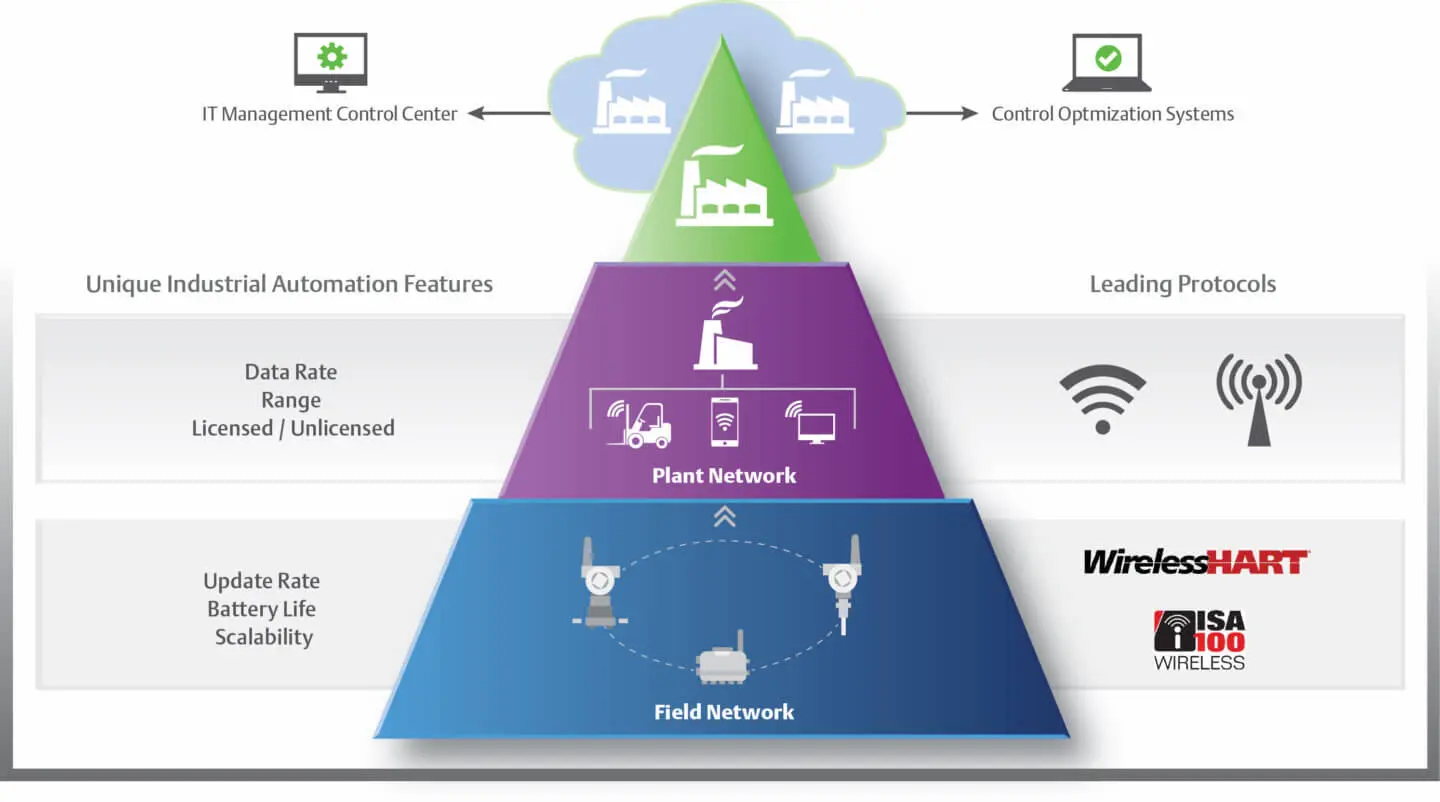
In a Flow Control article, Emerson’s Tom Bass looks at new wireless protocols, including 5G, and opines on the validity of each.
Any company that has developed a new product for a specific market and purpose will eventually ask, “Where else can we sell this thing? What other industries have a similar use case where it could fit?”
It’s a natural question since finding new markets means greater sales potential. Here’s a case in point: wireless communication protocols. If you spend some time researching these, you will likely find there are far more of them than you imagined. If you can think of an application, such as your home’s water meter sending data to your utility, there’s probably a wireless protocol designed for that exact purpose.
Some of the companies that design a new protocol look longingly at industrial users and try to decide if they have a viable offering. Making such an evaluation on a practical basis from the user point of view is the main point of my article in the December issue of Flow Control. How do you determine value and practicality?
When examining these protocols with respect to specific industrial automation requirements, one can identify the leading protocols designed for the intended use cases. In processing facilities, the most common choices are Wi-Fi and 5G cellular for mobile worker and data backhaul, used with WirelessHART and ISA100 for process control and monitoring instrumentation. Choosing one over the other for each use case requires careful evaluation.
When doing an evaluation, the four main points to consider relate to range, data handling, power consumption, and reliability. The article goes into more detail on these, so give it a full reading. If you look at the characteristics of WirelessHART on those four points, it is obviously designed specifically for industrial instrumentation, but there are many other applications for wireless in an industrial facility. For example, Emerson’s AMS Trex Device Communicator has Bluetooth capability so it can communicate on an as-needed basis with many field devices without opening enclosures or wiring cabinets to make a physical connection.
But there is a larger question in the mix of wireless networks for data backhaul, wireless workers, and other data-heavy requirements beyond the capabilities of WirelessHART. To date, most plants are using Wi-Fi for this purpose, and Emerson offers its Wireless 1552WU Gateway that connects WirelessHART self-organizing networks to any host system with integrated Wi-Fi backhaul for security, scalability, and data reliability. This gateway offers host integration with DeltaV and Ovation, plus Modbus TCP provides universal integration and system interoperability.
Promoters of 5G look at this application and say they can do everything industrial users need and then some.
5G represents the latest generation of cellular connectivity, and it is reaching into the industrial world. Most general discussion touts enhanced mobile broadband (eMBB) for smartphones and tablets, with major improvement compared to 4G, aimed at virtual reality media, UltraHD video and other high-bandwidth applications. eMBB supports data rates up to 20 Gbps with up to 10,000 times higher traffic than 4G systems. Network speed and brute data-handling capabilities are truly extraordinary under the right conditions.
Is it better than Wi-Fi? For now, let’s say it’s different. 5G can do some amazing things, but it diverges conceptually from Wi-Fi in many respects, which the article discusses in greater detail. Some users will see those differences as advantages, others will not. For now, the jury is still out as products suitable for industrial installations are still largely under development.
Has your facility had any discussions on where you might be headed? Does 5G look like something you will consider in greater detail? How are you thinking about using it?
Visit the Industrial Wireless Technology pages at Emerson.com. Gain access to all your facility data with industrial wireless infrastructure for process instrumentation and wireless networks from Emerson, the expert in industrial wireless technology. You can also connect and interact with other engineers in the Oil & Gas and Chemical Groups at the Emerson Exchange 365 community.
